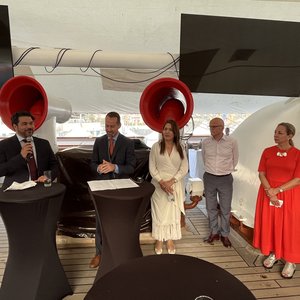NOAA Sea Grant Awards $394,000 to Breed a Bigger, Better Pacific Oyster
Two University of Southern California biology professors and a California Sea Grant marine advisor have been awarded $394,000 in a national aquaculture research competition sponsored by NOAA Sea Grant.
The two-year award will fund genetic studies and field tests of a newly developed double-hybrid Pacific oyster that the biologists believe can transform the West Coast’s $72-million-a-year oyster growing industry.
“This research is of great interest to us,” says Jonathan Davis of Taylor Shellfish Farms, one of the region’s largest shellfish growers and a collaborator on the project. “We believe we can leverage grant resources into a new product stream of high-yielding Pacific oysters.”
The new oyster, 15 years in the making, is produced through a two-stage cross-breeding process that confers “hybrid vigor”– superior growth, size and health – to its tasty offspring, says the project’s leader, USC biology professor Dennis Hedgecock. In small-scale experiments funded by the U.S. Department of Agriculture, the first generation hybrid oyster was shown to grow twice as fast as the industry standard, meaning that farm yields could potentially double, too.
The NOAA Sea Grant award will allow Hedgecock and grant co-recipient Donal Manahan, also a biology professor at USC, to identify genes and metabolic processes responsible for hybrid vigor in the oyster and to use what is learned to develop a tag for identifying, within the first few hours of birth, offspring with desired traits.
This early-detection tool will enable researchers to continue experimenting with breeding bigger and better Pacific oysters rapidly, without having to wait two years for the oysters to reach maturity and undergo normal testing.
The Pacific oyster, whose scientific name Crassostrea gigas means “giant cupped oyster,” is the species selected for the hybrid breeding program, as it accounts for about 95 percent of the West Coast’s cultured oyster product and about 98 percent of total global production.
Paul Olin, an aquaculture specialist and marine advisor with California Sea Grant, is overseeing the soon-to-begin farm trials, to document the oyster’s performance under in-situ environmental conditions representative of California’s varying coastal climes. The Hog Island Oyster Company in Tomales Bay, Grassy Bar Oyster Company in Morro Bay and Carlsbad Aquafarm in northern San Diego County are participating in these trials.
Olin will make sure that the new oyster and control groups are properly matched, identified and separated from each other. He will also collect data on yields, production costs and return on investment for the trials.
“We want to demonstrate to oyster growers that science translates to the bottom line,” Hedgecock said. “We want to show them that a better seed is a better business.”










